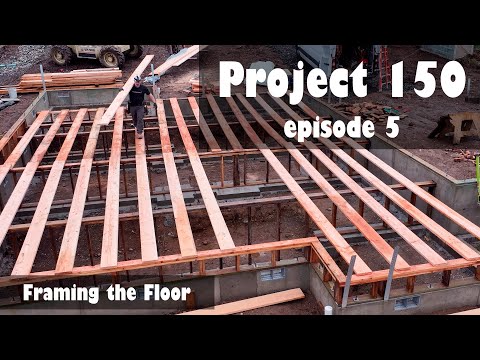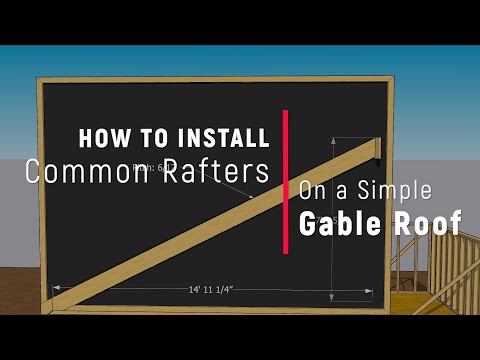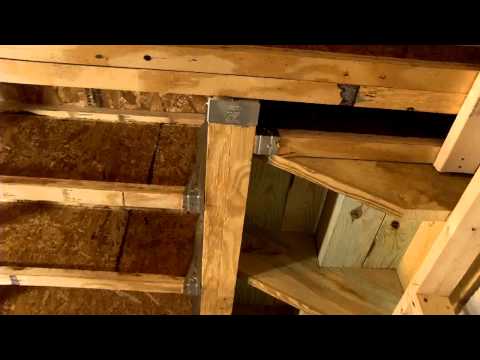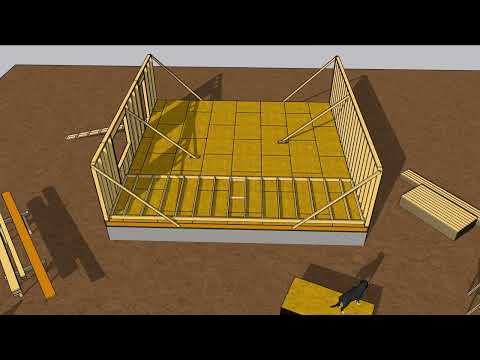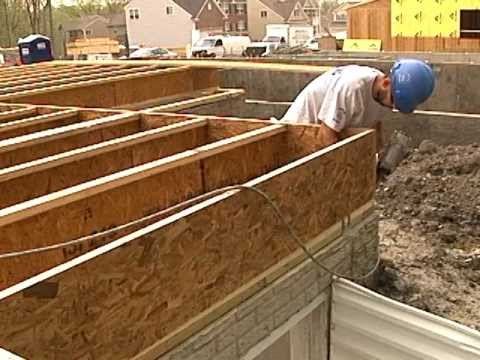Floor framing begins after the foundation is ready and the mud sills are installed. Typically, there's a beam somewhere because floor joists cannot usually span a full house width. Usually, the beam is level with the mud sills, and the joists sit on both.
Floor joist layout options 16 o.c. or 24 o.c.?
Before laying out the mudsills, let's look at some layout options. Subflooring and other sheet goods come in four-foot by eight-foot sheets. Both four feet and eight feet are divisible by 16 inches.
Every sixteen inches is marked on tape measures with a black arrow. They're also divisible by 24 inches, marked with a red square.
For joists that are to be placed 16 inches on center (o.c.), mark a layout line 15-1/4 inches in from the end of the mudsill. This puts the center on the host at 16 inches and each successive joist 16 inches apart so that an eight-foot piece of subflooring will end in the middle of a joist, where the next sheet will begin.
Run the joist ends past each other
Rather than cutting every joist to butt into another on top of the beam, run them past each other. This eliminates a lot of cutting.
However, it places the sister joist on the opposite side of the layout line, so this needs to be remembered. When laying out the beam, place Xs on both sides of the line, indicating which direction the joist runs.
This ought to keep all of the joists running straight and square so that the subflooring will install smoothly.
Locate and account for point loads
But before putting down subflooring, locate and transfer point loads. Atop this beam will sit a bearing wall that carries half the ceiling weight. This wall sits directly over the beam, so the load is transferred directly.
If the wall is more than a joist depth away from the beam, you either need to put the beam in a different place or you need a backup plan.
The roof is carried by the outside walls. Within those walls are places that have extra concentrations of weight, such as trimmer studs under headers. These studs need to be fully supported with blocks that transfer the weight to the mudsill, which transfers it to the foundation.
In this opening, the trimmers are fully supported by the doubled joists below, but this one has a larger load that is not fully supported. The best option is sistered joists that can pick up the load.
Don't sabotage the insulators
One other thing to think about before laying subflooring is how difficult it will be to insulate that last little joist cavity after it's covered. It will never be easier to insulate that before putting down subflooring.
Planning ahead means not going backward.
